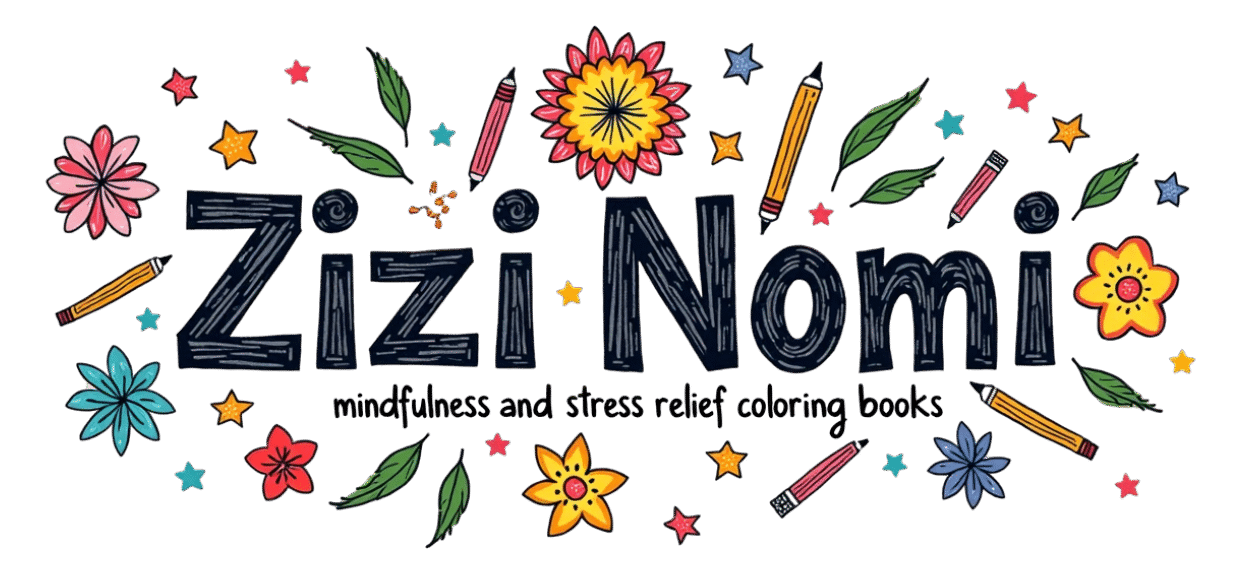The Science Behind Mindfulness Coloring

You don’t need to be an artist to use simple, structured drawing as a fast way to calm your mind. Research shows short sessions—often 10–20 minutes—help reduce stress and anxiety by giving your brain a predictable, restful task.
The trick lies in repetition, pattern and gentle focus. Designs such as mandalas and geometric pages guide attention and engage the brain in a soothing loop. That loop lowers arousal and helps you shift into a quieter mental state.
Adult coloring is not the same as formal art therapy led by licensed professionals. Yet, as a low-cost, screen-free practice it supports overall health and mental health when used regularly. A few minutes a day can be a practical way to unwind and reset your life rhythm.
Key Takeaways
- This practice offers quick, science-backed relief for stress and anxiety.
- Short sessions (10–20 minutes) can produce measurable calm.
- Repetition and pattern soothe the nervous system and the brain.
- Adult coloring complements professional support, but is not a replacement.
- Simple tools and the right books make this a sustainable self-care way.
What the Research Says About Mindfulness Coloring Benefits
Researchers have measured real changes when people use structured designs to shift attention away from worry.
How structured designs reduce stress and anxiety
Controlled studies with students and older adults show mandalas and plaid pages lower measured anxiety after short sessions. A 2017 study of university students found reduced anxiety and depression after daily sessions. A 2020 study with older adults reported 20 minutes of mandala work produced clear calming effects.
Why repetition, pattern, and detail calm your brain
Experts note three key calming elements: repetition, pattern, and detail. Dr. Stan Rodski recorded shifts in heart rate and brainwaves during focused filling-in. Dr. Scott Bea explains that relaxation lowers amygdala activity, easing fight-or-flight reactions.
Color choices and mood
Research from 2012 suggests blue and pink palettes can nudge mood toward calm. Use cool, soft hues when you want to reduce anxiety and feel safer.
| Study group | Session length | Outcome |
|---|---|---|
| University students (2017) | Daily, 7 days | Lower anxiety and depression scores |
| Older adults (2020) | 20 minutes | Significant anxiety relief vs. controls |
| Lab observations | Short sessions | Heart rate and brainwave changes noted |
“The repetitive movement can be soothing for high stress and anxiety.”
From Stress to Sleep: How Coloring Supports Your Mental Health
Ten to twenty quiet minutes of patterned work often creates real mental relief. Short sessions give your brain a predictable task that lowers arousal and eases stress. This makes them a useful tool when you need a fast reset.
Short sessions that ease anxiety and offer a healthy distraction
Even brief time blocks—about 10 to 20 minutes—can reduce anxiety and shift racing thoughts. Researchers and practitioners report that a quick page serves as a safe, short-term distraction to “turn off” worry.
You don’t need long rituals. Set a timer, pick a calm design, and let steady hand movements bring your focus back to the present moment.
Unwinding at night without screens to improve sleep quality
Swap pre-bed scrolling for a quiet page to help melatonin rise naturally. Blue light from devices keeps the brain active; a low-stimulus page invites downshift instead.
Mandalas or flowing patterns work well before sleep. Their symmetry encourages a slow, steady pace that quiets breathing and reduces racing thoughts.
| Action | Duration | Expected effect |
|---|---|---|
| Short patterned session | 10–20 minutes | Lowered stress and anxiety, quick mental breather |
| Evening screen swap | 15–30 minutes before bed | Improved sleep onset, reduced blue-light disruption |
| Choose calm books and pages | Per night routine | Better downshift, steadier breathing, calmer mind |
“The repetitive movement can be soothing for high stress and anxiety.”
- Fits busy adults: set a timer and stop when minutes are up.
- Complements meditation — good when sitting still feels tough.
- Shows up in study results: students report measurable shifts after brief sessions.
Coloring as a Gateway to Mindfulness, Focus, and Meditation
A simple page can pull your scattered attention back into the present and train your focus over time. This practice gives you an accessible way to practice presence without sitting still for long periods.
Settling into the present moment and sharpening attention
Each deliberate stroke offers a small anchor for your attention. You notice breath, hand movement, and the feel of paper.
That gentle noticing builds your ability to focus. Over repeated sessions you can extend how long you stay attentive.
Mindfulness in action: tuning into breath, hand, paper, and color
Think of this as meditation with a practical scaffold. Michele Goldman highlights how the act helps you pay attention to details right in front of you.
By naming these sensations—breath, pressure, hue—you grow awareness without forcing it.
Flow state and a full-brain workout for better motivation
When a page absorbs you, time softens and distractions fade. That flow engages both creative and organizational parts of your brain.
Researchers note rhythmic, repeatable tasks quiet the amygdala and lower stress signals, helping you return to tasks with clearer focus and calmer energy.
“The repetitive movement can be soothing for high stress and anxiety.”
- Use a short daily session to strengthen attention slowly.
- Choose a pattern that feels steady, not demanding.
- Keep it tech-free—no apps or media—to let awareness deepen.
Processing Emotions Safely While Knowing the Limits
Using a page as a safe container can help you move hard emotions without getting stuck in rumination. This is a practical, home-based way to notice what you feel and let it shift.
Letting out feelings on paper vs. licensed art therapy
You can use simple art media to name a feeling, pick a palette, and watch tension ease as your brain downshifts. Michele Goldman notes this process often helps people release unwanted emotions.
The American Art Therapy Association defines art therapy as a licensed mental health profession where a trained therapist guides deeper work using creative media. Experts like Susan Gordon and Drena Fagen stress that therapeutic pages complement but do not replace formal art therapy.
- Use a single page to check in: name one emotion, then begin.
- Keep it private and low pressure—this helps adults feel safe.
- Seek professional help when symptoms disrupt daily life; coloring is a supportive tool, not a cure.
“The repetitive movement can be soothing for high stress and anxiety.”
Who Benefits and How to Get Started Today
You can tailor this simple activity to suit work breaks, study blocks, or family time. It fits into pockets of your day and asks for only a few focused minutes.
Adults at work, students, parents, and kids: tailoring the activity to your life
Adults can take a five- to twenty-minute break at work to reset attention and energy. Students use a short page between study blocks to refresh focus.
Parents and children can share a quiet page after dinner to connect. Giving kids age-appropriate pages keeps the time low-pressure and fun.
Many studies used 10–20 minutes; repeatable short sessions build habit without stealing your day.
Practical tips: pick the right coloring book, set a tech-free moment, and go portable
Pick a coloring book that matches your goal: mandalas for calm, nature scenes for soft focus, or themed books for motivation. Choose thicker paper to reduce bleed-through.
Set a tech-free window; Pew Research finds most people check phones reflexively, so a page becomes your cue to unplug. Keep tools in a small pouch to make the activity portable.
- Short sessions: aim for minutes, not hours.
- Fine motor work: steady hand practice supports motor skills and daily dexterity.
- Simple setup: good light, comfy seat, and a tray for pencils.
“A small, repeatable practice is the easiest way to keep a reset that actually fits your life.”
Conclusion
A quick, structured page can act like a small reset you use anywhere. Short sessions show real, research-backed benefits for health and for easing stress and anxiety.
Use a calm design to bring your present moment attention back and soften racing thoughts. This practice engages your brain and builds steady awareness and focus over time.
Remember: adult coloring is therapeutic for many people, but art therapy is guided care. Reach out for professional support when symptoms persist or worsen.
Try one page today—pick a book, choose two soothing shades, and give yourself a quiet minute to pause. It’s a small, sustainable way to care for your mental health and invite calm into your day.

